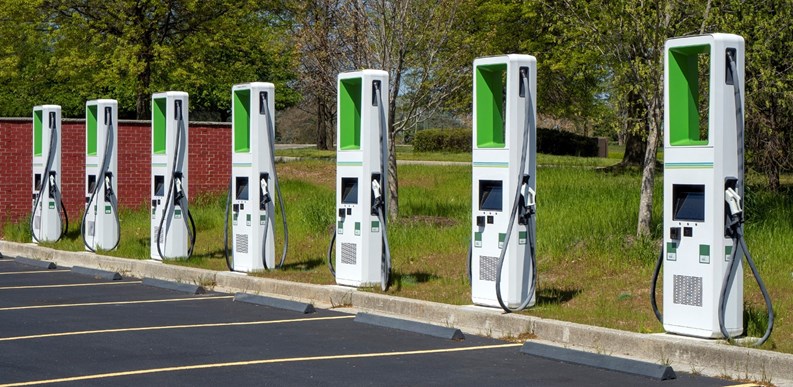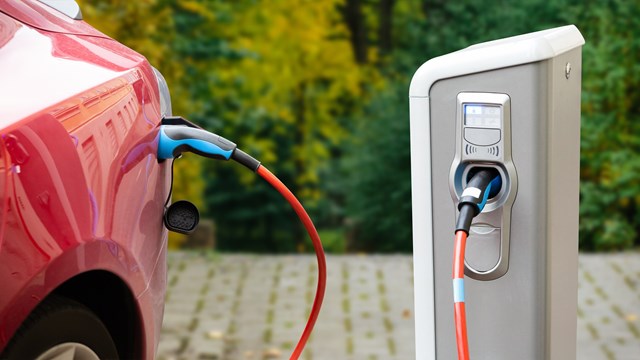One of the revelations during the early months of the pandemic were photos from all over the globe of clear skies over cities that were normally hazed in by pollution. What a difference a few million less cars made. In October 2020, Governor Phil Murphy took a step in making that smog reduction permanent in New Jersey by signing into law rules prohibiting co-op, condominium, and HOA communities from barring the installation or use of electric vehicle charging (EVC) stations in parking spaces designated for use by individual unit owners. The law also voided any existing rules limiting those charging stations.
“The board of a common interest community is now required by law to grant exclusive or limited use of any portion of a common element to a unit owner to install and use an EVC station in that owner’s parking space,” says Chris Florio, an attorney with the law firm of Stark & Stark based in Lawrenceville, New Jersey. “However,” Florio explains, “that’s not to say there aren’t requirements and restrictions.”
A Deeper Dive
According to Florio, there are certain requirements under the new legislation, and associations may impose reasonable restrictions. All EVC stations must meet applicable health and safety standards, along with meeting all applicable local zoning ordinances, permits, etc. If the association’s approval is required prior to installation of an EVC, the approval process will be the same as any other architectural modification. If not approved within 60 days of receipt of the application, the application will be deemed approved.
Second, if required by the governing documents, the owner must obtain association approval. A unit owner’s application may be denied if the association reasonably determines the EVC station poses a life-safety risk. However, the association must approve the installation if the owner agrees, in writing, to comply with the association’s architectural standards, engage a licensed electrician to install all the required electric lines and electrical infrastructure, and obtain proper insurance indemnifying the association with carrying sufficient coverage to cover the EVC station.
Another issue associated with EVCs is who will pay for the cost of additional electric costs. Individual metering directly to the owner of the charging unit is obviously the preferred arrangement, but in some situations that may not be possible or feasible. The law requires that where such individual metering is not available, the EVC owner pay for the electricity associated with the EVC station. If each EVC station does not have its own meter, a CIC may assess the owner for any additional costs in the use of electricity, along with any infrastructure improvements needed to accommodate the EVC station. The sums assessed to the owner can be collected in the same manner as common expense assessments.
The onus isn’t entirely on the association, however. EVC owners must also reimburse the association its reasonable costs of the application review, including reasonable engineering and attorney’s fees. The association may require the applicant-owner to put these fees in escrow. Other costs that the owner of an EVC station is responsible for including, but not limited to, damage to the EVC station, parking space, common elements, etc., resulting from the installation, repair, removal, or replacement of the EVC station.
Logistics & Costs
Fred Silver, vice president of CalStart, a non-profit in the electric vehicle industry explains that the installation and EVCs in private homes is a relatively simple undertaking. Units are easily installed in existing garage areas or outside the individual property, thus making the choice of electric vehicles and their accompanying charging stations a relatively simple matter for HOAs composed of single-family homes. The logistics become more complicated in communities that have parking lots - particularly if parking spaces aren’t assigned to specific owners - or in buildings with indoor garages.
“The main problem is the cost of bringing the electric service to the specific spot. This will generally involve cutting concrete, which can be quite expensive,” Silver says. “The farther the parking space is from the source of power, the more it will cost.” Cutting concrete and laying pipe through which electric lines will run to the charger at a specific parking space can run into the thousands of dollars; as much as $15,000, depending on the property. Silver suggests that in new buildings, laying the conduit lines to individual parking spaces during initial construction can save money later. The logistics of billing for electric use from the EVCs though remains a problem.
Another approach might be for owners with adjacent parking spaces whether outside or indoor to share charging units. The reality of today’s charging modules would likely limit shared units to two users. As concerns installing EVCs on a community wide basis, Florio advises that, “An association may install EVC stations for use by all its owners. However, this would be subject to the capital improvement language set forth in the CIC’s governing documents.”
Many believe the trend to vehicles using renewable energy sources is the future. The question for condo, co-op, and HOA communities is not so much whether they want to follow that trend, but at what pace. New Jersey’s new law enables individual owners to make that choice regardless of whether the association wants to follow.







Leave a Comment